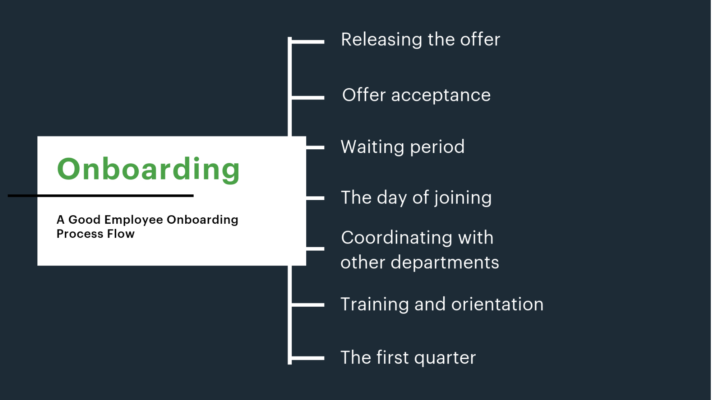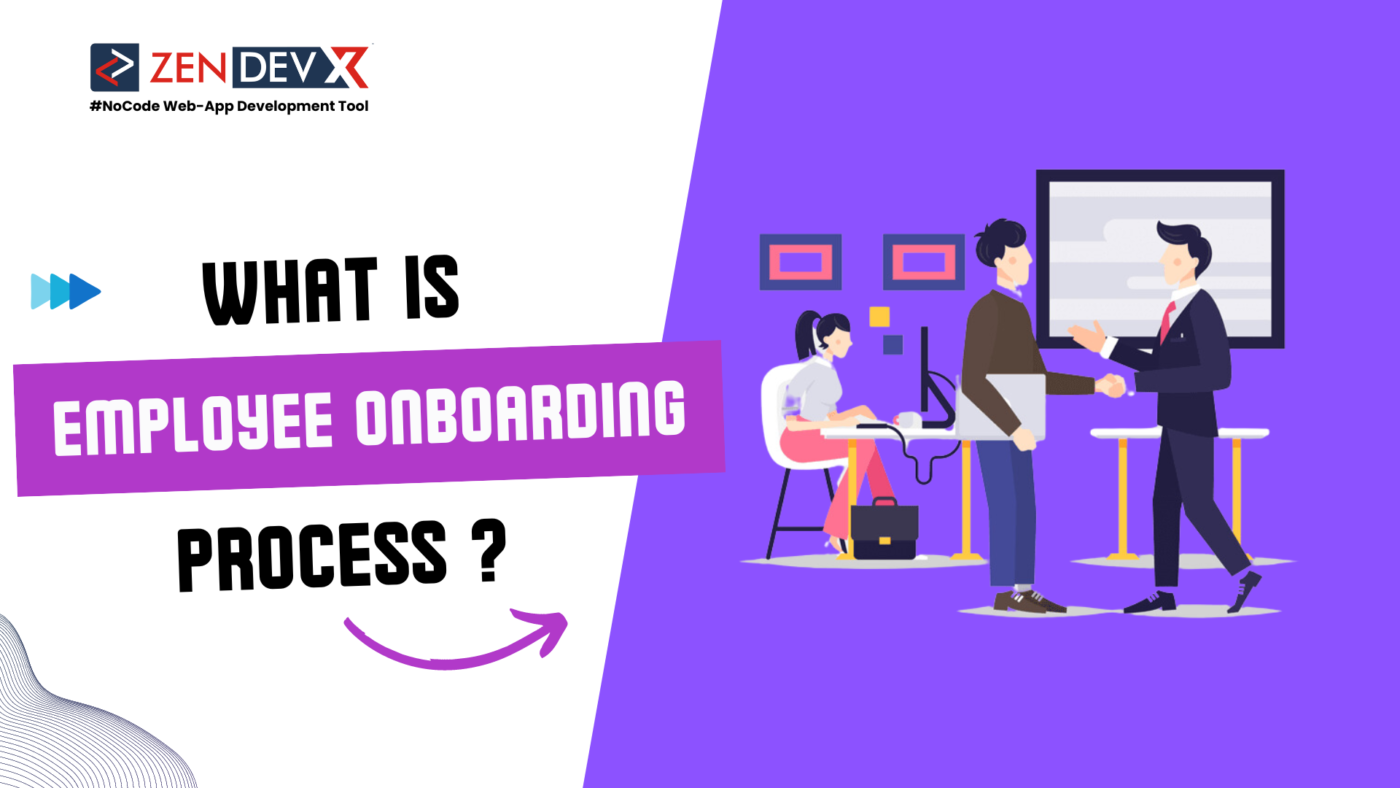Although daily obstacles abound for HR managers, none more demanding than recruitment and employee onboarding. Though the demand is ravenous, the pool of talent is progressively getting smaller. More than ever, succeeding in the search for the ideal applicant in spite of the talent scarcity becomes vital. But after the proper person is identified, an even more difficult task starts. If the new person leaves for a better environment, all your effort will be lost and you will be back to step one after spent countless hours looking for, finding, interviewing, and recruiting the appropriate talent. Alternatively, suppose an applicant agrees to a date of joining, confirms the notice period, accepts an offer, but then cancels at last minute.
Onboarding Methodologies
Is it possible to actually stop anything like this by employing a more regimented employee onboarding system with a clear process? Would it truly raise employee engagement, inspire loyalty in fresh hires, and so raise the employee retention rate?
Describe onboarding in HR
Attending an orientation, familiarising oneself with the company’s hierarchy and culture, and understanding its values and objectives constitute the structured set of activities used to include new hires into an organisation under “onboarding”.
What is employee onboarding?
Employee onboarding is defined differently in each company. Although the procedure usually is very similar, the time-period and activities needed make every onboarding programme different. Although some HR managers seem to view the employee onboarding process as only the new hire documentation, more astute and dedicated team members understand the employee onboarding meaning differently. They take into account the whole period from the time an offer is made till the point of employee onboarding when an employee starts to actively participate to the company. From the moment you offer to the time the person starts really producing in a position, onboarding covers all. Still, the time required to reach there could differ depending on the company. While some companies drag it out for 18 months, others think of onboarding as a one-day event. Still, for almost all companies, the employee onboarding process begins very immediately following the offer letter to a potential hire. Under the concept of onboarding, every process inside that time span—including the orientation programme, the training plan, creating performance indicators, and a feedback loop—is broken out.
Describe employee onboarding process
An employee onboarding process is a set of pre-defined actions used to expose the new hire to the surroundings and corporate culture. Organisations that want to interact early with their staff members and provide a seamless onboarding experience must first have a flawless onboarding process. The onboarding programme consists in several activities like training, socialising, orienting of new hires, etc.
Why does effective onboarding of employees matter?
The first contact an employee has with the company following the protracted interview process is known as onboarding. Should the experience fall short of expectations, your staff member can come to regret their choice to take the employment offer. A bad onboarding process could influence their impressions, lead to biassed opinions of the company, and finally lead to early quitting due influence. Helping your new workers settle in their roles, get to know the company, receive clarity on their job objectives, and build a good rapport with other staff members depends on a strong employee onboarding programme. A great onboarding experience not only makes staff members welcome but also facilitates speedier gelation with the current organisational family.
Enough as it is weighs on HR managers. Dreams are triggered just by the idea of handling the enormous volume of documentation required throughout the onboarding period. Therefore, simplifying the onboarding process not only shows new hires but also helps the HR team to have less work.
Advantages of Automating Employee Onboarding
You have to have a strong employee onboarding procedure if you want to avoid last-minute mistakes and compliance problems. An effective employee onboarding system does as follows:
- Provides a well-defined onboarding model.
- Reduces the anarchy created by documentation.
- Reduces the staff onboarding period.
- Less human mistakes and hand interference.
- Relieves the HR team’s burden.
- Gives every recently hired employee a consistent experience.
- Transparency of injections into the process flow gives the staff an unforgettable onboarding process.
A Decent Flow of Onboarding for Employees

Making the offer and releasing it
The process of employee onboarding begins just following the hiring phase. Once an employee is chosen, an HR manager welcomes them warmly via email including policy documentation, links to complete digital onboarding forms, and an offer letter together with a few basic paperwork. Maintaining the open approach helps the staff member to understand the culture of the company and informs them about expected outcomes.
Offer approval
The finest companies will set expectations, discuss forms, procedures, and benefits over a brief conversation once the employee accepts the offer. Maintaining the new employees’ involvement will confirm their decision to take the offer and create close emotional bonds with the company. Starting to draw the agenda for staff orientation at this appropriate moment is wise.
Waiting period
Accepting the offer does not guarantee that an employee would show up on the joining date. The staff member could also be receptive to offers from other possible companies throughout the waiting period. Thus, developing a good rapport with the staff is really important. Tell the staff members they are appreciated. While you are developing your employee onboarding strategy, you should also consider the waiting time.
The day of arrival
Most first-day new employees experience conflicting emotions. At the same time they experience nervous, pleased, thrilled, and anxious feelings. HR managers thus have mostly responsibility for making sure the new employees feel welcome and at ease. Including new employees in a feeling of belonging can help them to be more dedicated and concentrate better on their task. By means of a convenient employee onboarding checklist, HR staff’s burden will be reduced. Here are some tasks to finish before your joining day:
- Maintaining the orientation schedule ready.
- Assign IT assets—workstation, email access, etc.—based on.
- Get required office supplies—furniture, keys, access card, etc.
- Create a payscale account.
- Choose a go-to person or mentor to assist the staff member in calming down.
Working with different departments
Coordinating with important stakeholders—co-workers and managers—and informing them of the beginning date of the new hire is imperative. To decorate the cubicle of a new hire, coordinate one-on-one welcoming meetings, and plan an orientation session, HR staff members could call on other staff members.
Orientation and training
Orientation courses provide the new hire with an insight into corporate aims and a general picture of the corporate culture. For new employees, this phase provides pertinent knowledge about corporate regulations, team procedures, and team members. Setting role-based goals and objectives for the following 30, 60, or 90 days at this appropriate moment can help the new hires to concentrate on the relevant areas. Most companies plan the training programme to rapidly bring their staff members up to speed as most of them need some basic instruction to start. By means of talent assessments, companies can evaluate the knowledge and aptitude of the new employees and create a customised training programme in line with their skill set.
The first quarter
Reviewing the expectations of the companies and the employees and making sure they coincide is the main goal of this period. Active conversations on the development and ongoing efforts of the new hire in becoming a natural part of the company should occupy this stage. Here is a list of to-do activities HR personnel and management must complete to help to keep the new employees long:
- Talk about the staff member’s experience and see whether it satisfies their expectations.
- After their performance, provide comments.
- Find out whether the staff member has any problems or worries.
- Discuss professional advancement and strategy.
- Ask about comments on onboarding and any recommendations.
- See whether they require any more instruction.
Automating staff onboarding helps to reinvent it
HR executives often have too much on their plates regardless of the company size. They are absolutely tired by the time the onboarding begins; they spend enough time rummaging for the correct materials. Automating the procedure will drastically cut their workload instead of aggravating their tiredness by requiring them to perform tasks the traditional way.
By means of HR workflow automation tools, you may eradicate manual dependency in the employee onboarding process and replace the forms and checklist approach. Automated employee workflow helps to simplify and speed down the difficult approval procedure. Furthermore, the procedure is mainly visible, therefore it would be easy to get knowledge on the state or locate the problems. Using an automated onboarding tool at your company helps you avoid tracking managers and new hires to finish specified responsibilities. That is handled by the system.
Automatic alerts are issued to the correct individuals causing a delay in the production. You only have to become involved when the system runs across an obstacle. You don’t have to spend a lot of money in HR Management Software or rely on the IT staff to create advanced software in order to streamline the workflow. The whole employee onboarding process can be automatically end-to-end using a basic workflow application. Using the drag-and-drop interface or customising one of the pre-defined onboarding templates to fit their needs, even HR employees with minimal to no technological knowledge may construct an automated workflow from scratch.
In essence, a successful onboarding tool should provide fresh hires with a motivating dose to explore the new organisational terrain free from any hint of doubt. New employees can spend less time buried by documentation and more time learning the organisational values, touring the workplace, and befriending others by means of an automated onboarding procedure.


